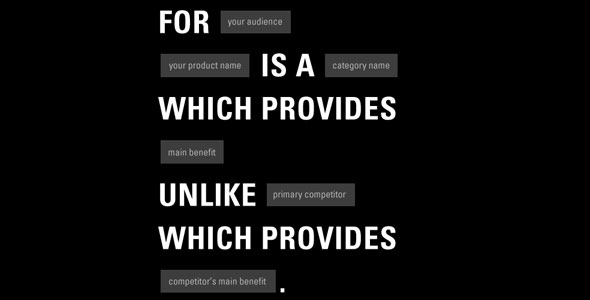Generally referred to as a brand strategy, positioning strategy, or brand positioning statement, a positioning statement is a focused description of the core target audience to whom a brand is directed, and a compelling picture of how you want the marketplace to view your brand.
More often, than not, consumers will run across brands that are either poorly defined, market defined or simply not defined at all. This presents several marketing challenges in the long-term and ultimately a lack of focus can create a lack of sales and so on.
A well-constructed positioning statement is narrow enough to keep a brand focused and expressive enough to allow for future growth. Your company’s primary goal is to ensure consistency across all communications. A holistic positioning will ensure that the strategic and tactical efforts in market are effective. A great positioning statement is unique, durable, narrow, and believable and affordable.
I challenge emerging brands to take a look at their current positioning statement – the ‘About Us’ description on your website, marketing collateral or media placements. Ensure that you are accomplishing the following tasks:
- Tell a Compelling Story
- Reinforce your Brand Positioning
- Establish Credibility & Expertise
- Convey your Reason for Existing – Mission Statement
- Assert your Company Philosophy
- Reassure Prospects: Let the know, who you are, that they can trust you, you know your stuff and you’re accessible
Positioning Statement Format
A format to achieve the goals above includes:
- 1-2 sentences that assert insights to build credibility. Indicate: (1) What your brand does. (2) Why your brand does it. (3) Your Mission Statement.
- In the following sentence(s), review the core root of your business, how and why it began and add a personal touch (a statement that makes your company relatable).
- Now, let’s discuss your unique selling proposition – your competitive advantage. Decipher product attributes (descriptions of your product benefits) from Product Emotions Evoked (Confident, Sexy, Modern, and Edgy). This is fueled from a customer centric point of view. Elicit feedback from buyers to understand the brand experience and adjust your interactions accordingly to elicit what position you want to hold in a client’s share of mind.
- Next, close strong. Include contact information and reassert your brand’s market demand through statistics and remind readers of your core target audience and boast a bit. If you don’t champion your brand – who will?
- Last but not least, apply the tried and true adage – KISS (Keep It Simple Silly). Don’t talk above your customer’s head. Get to the point and let your brand’s personality shine.
Ultimately, your brand positioning statement will be similar to your mission or purpose statement, but takes into account your customers and competitors. It will also be similar to your unique selling proposition (USP), but takes into account your target audience. The goal is to enable transparency and a clearer understanding as to why clients should utilize your products and services. If you don’t define your brand – the market will.
© YFS Magazine. All Rights Reserved. Copying prohibited. All material is protected by U.S. and international copyright laws. Unauthorized reproduction or distribution of this material is prohibited. Sharing of this material under Attribution-NonCommercial-NoDerivatives 4.0 International terms, listed here, is permitted.













